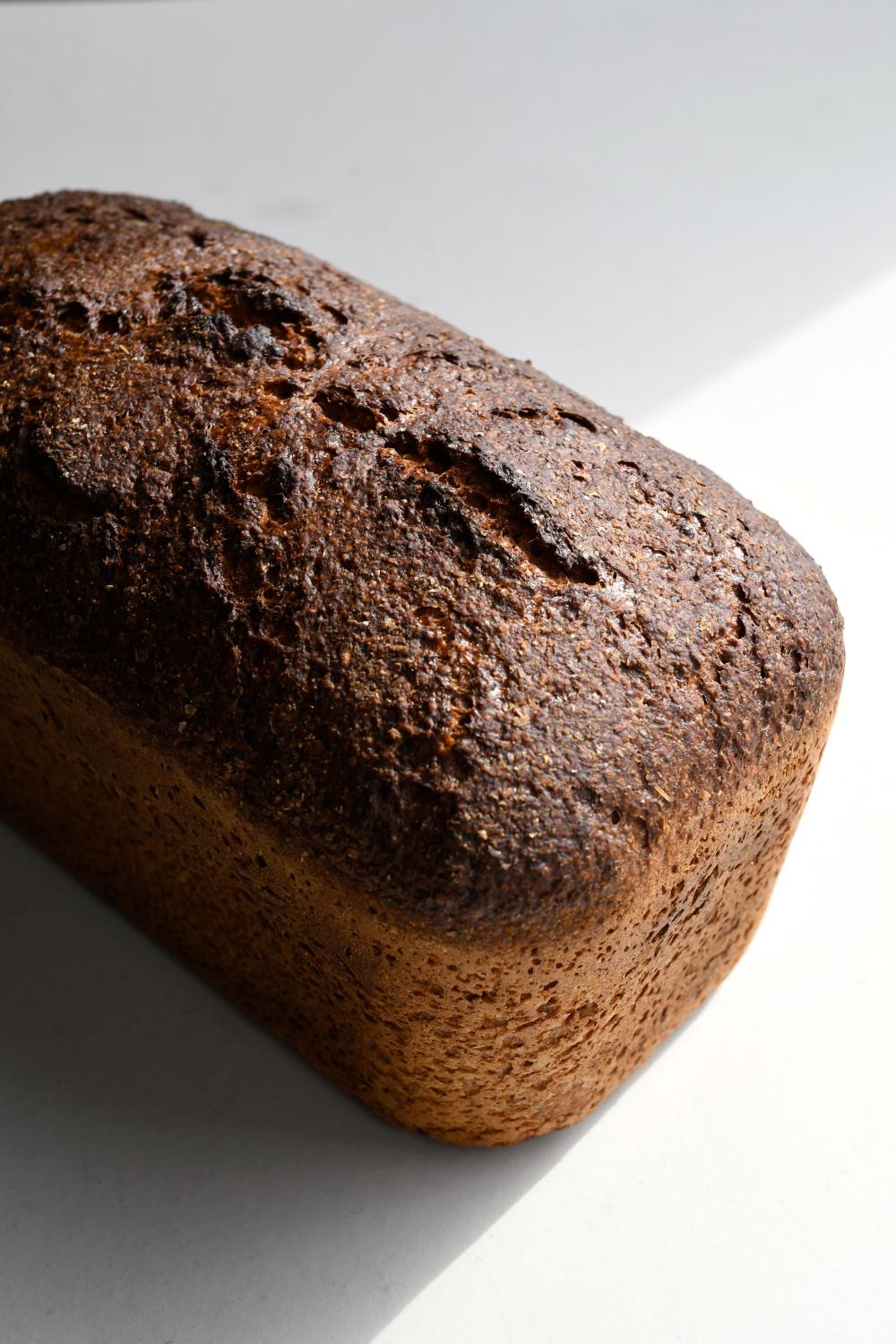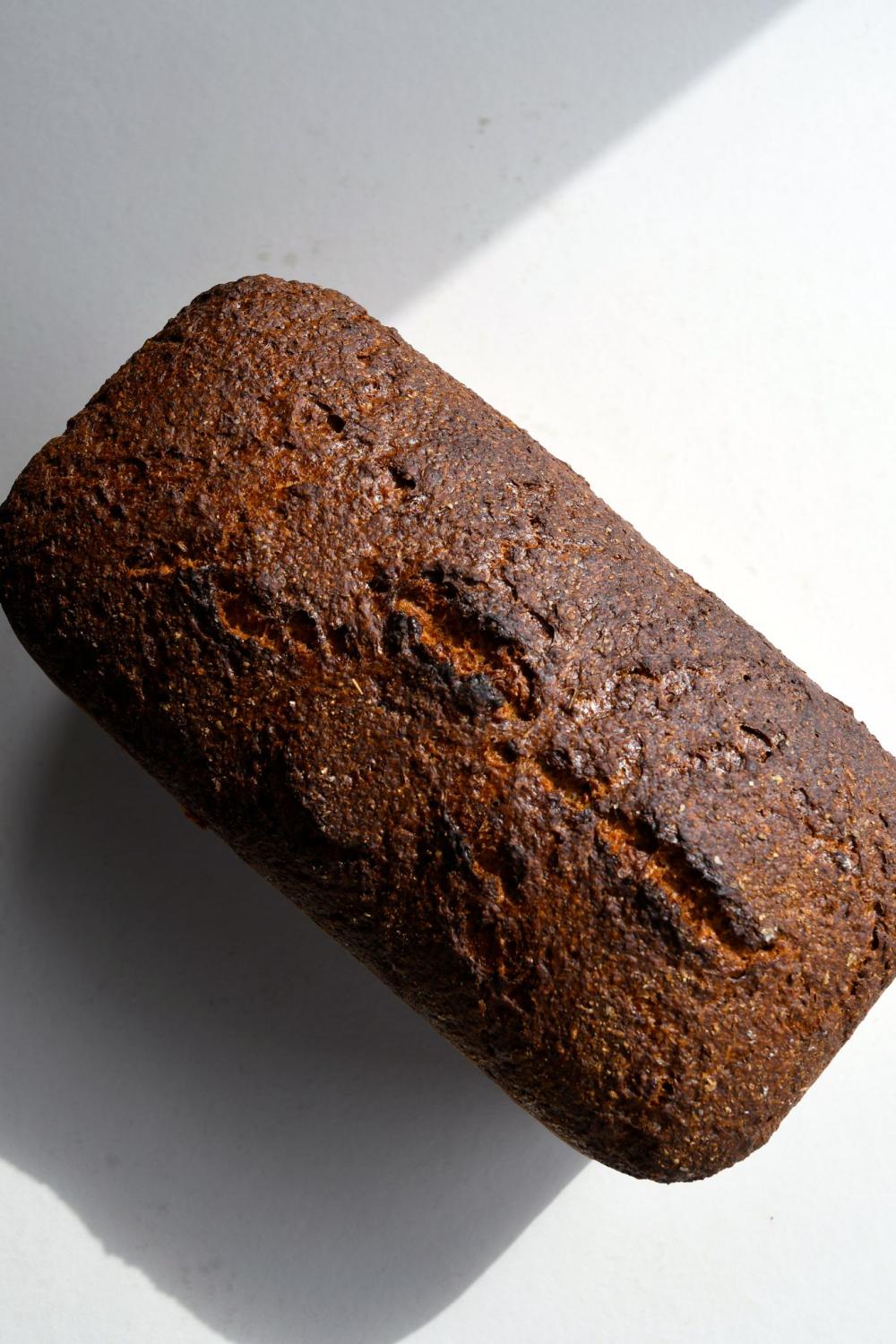This recipe is from our Shipton Mill head baker Chris Holister, and uses a scalding technique on a small percentage of the flour, which contributes to softness of crumb and longevity of shelf life.
Because it is a 100% wholemeal loaf it is full of honeyed notes flavour from the bran, and has a denser texture from it also.
We currently use our heritage grain wholemeal flour for this bread. Our “Lammas Fayre” Stoneground Wholemeal flour is milled from a unique blend of over 150 heritage wheat varieties developed by John Letts at Heritage Harvest, and grown just down the road from the Mill at Broadfield Farm. You can read more about the flour if you’re interested here. If you don’t have this flour, you could use other heritage grain wholemeal flours for the recipe as a substitution. Our organic stoneground wholemeal which includes Maris Widgeon also makes a great loaf with this recipe.
The heritage grain’s gluten is more delicate than some modern wheat varieties, so make sure your starter is nice and fresh and not too acidic when you come to bake. A very acidic starter will start to break the gluten structure down too early.
Makes 1 tin loaf, approximately 1.80kg weight. You will need a 3lb loaf tin.


